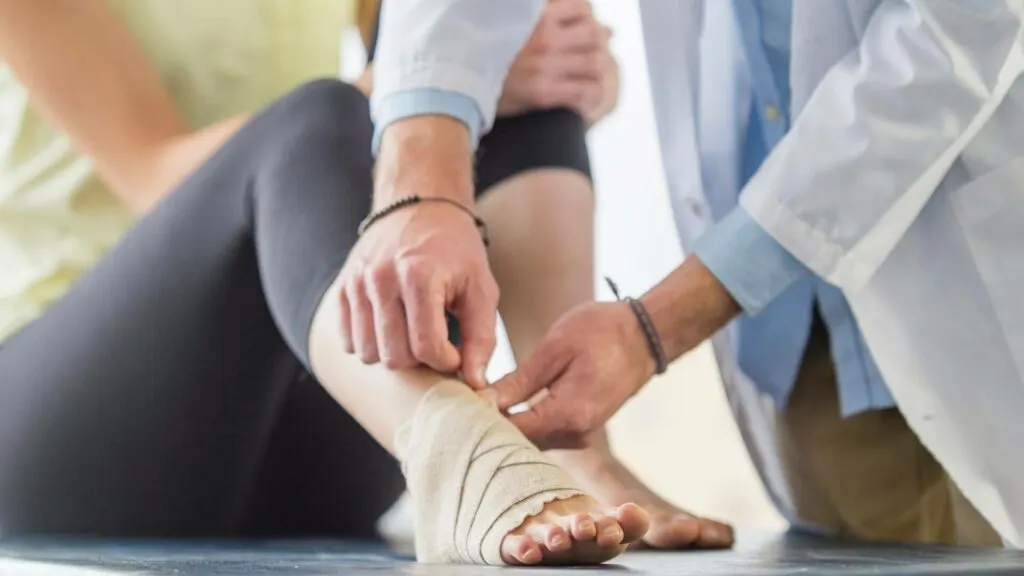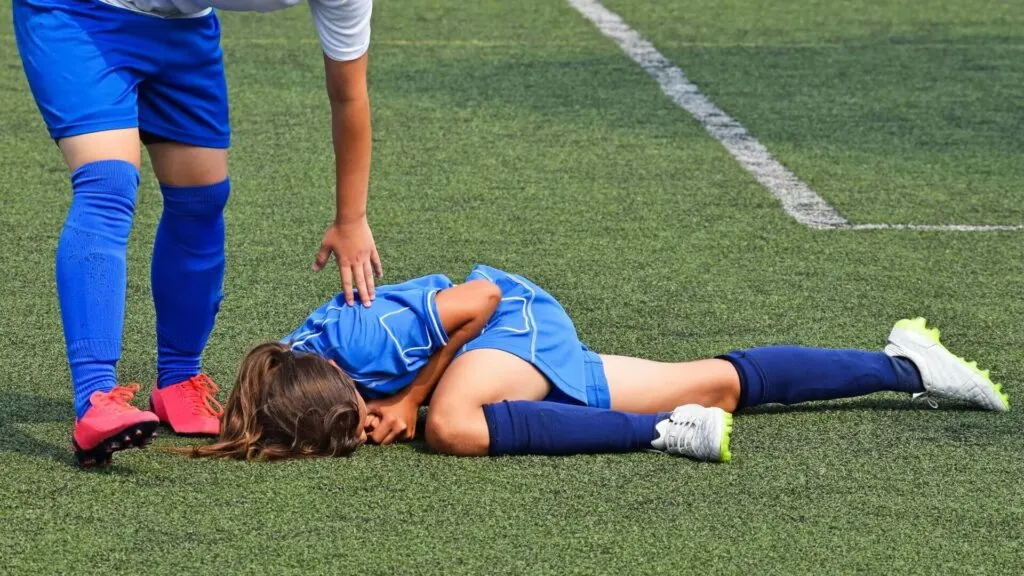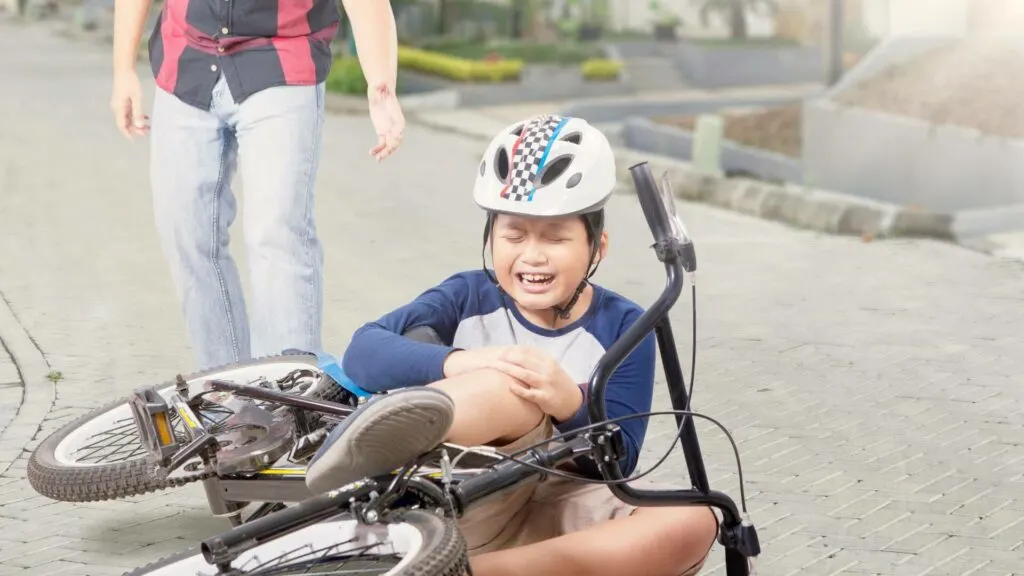Accidents and injuries are an unfortunate reality of life, and as parents, it’s essential to equip our children with the knowledge and skills to handle such situations safely and confidently. Teaching kids to be prepared for an injury goes beyond basic first aid knowledge; it involves instilling a mindset of awareness, responsibility, and resilience. In this article, we’ll discuss effective strategies and tips for parents to teach their kids how to be prepared for an injury and respond appropriately in emergency situations.

Start with Basic First Aid Training
One of the first steps in teaching kids to be prepared for an injury is providing them with basic first aid training. Teach your children essential first aid skills such as cleaning and bandaging wounds, applying ice packs for swelling, and recognizing signs of distress or injury.
Consider enrolling your family in a certified first aid and CPR course designed for children, which can provide hands-on training and guidance in emergency response
techniques.
Create a Family Emergency Plan
Developing a family emergency plan is crucial for ensuring that everyone knows what to do in the event of an injury or other emergency. Sit down with your children and discuss potential scenarios such as a fall, burn, or allergic reaction, and outline step-by-step instructions for responding to each situation. Designate specific roles and responsibilities for each family member, establish emergency contact numbers, and identify nearby medical facilities or urgent care centers.
Practice Safety Drills
Regular safety drills can help reinforce emergency preparedness skills and familiarize children with appropriate response procedures. Conduct practice drills for various injury scenarios, such as a fire evacuation drill or a simulated fall or injury. Encourage your children to actively participate in the drills and practice implementing the steps outlined in your family emergency plan.
Use these drills as teachable moments to reinforce safety protocols and address any questions or concerns your children may have.

Teach Injury Prevention Strategies
In addition to knowing how to respond to injuries, it’s important for children to learn how to prevent injuries from occurring in the first place. Teach your kids basic safety rules and guidelines for activities such as bike riding, swimming, playing sports, and using playground equipment.
According to Austin personal injury attorney Brad Bonilla, serious injuries can change your life, and if you’re not careful, they can change your life or the one of your loved ones.
Emphasize the importance of wearing protective gear such as helmets, knee pads, and life jackets, and encourage your children to practice caution and awareness when engaging in physical activities.
Foster Open Communication
Encourage open communication with your children about injury prevention and safety topics. Create a safe and non-judgmental environment where your kids feel comfortable asking questions, expressing concerns, and sharing any injuries or accidents they may have experienced. Listen attentively to their thoughts and feelings, validate their experiences, and provide age-appropriate guidance and reassurance.
Role-Play Different Scenarios
Role-playing is an effective way to help children practice their response skills and build confidence in their ability to handle emergency situations. Set aside time to role-play different injury scenarios with your kids, such as what to do if they fall off their bike, get a minor burn, or encounter a stranger who makes them feel uncomfortable. Act out each scenario and encourage your children to demonstrate the appropriate response based on their first aid training and family emergency plan.
Stock a First Aid Kit
Every household should have a well-stocked first aid kit containing essential supplies for treating minor injuries and medical emergencies. Involve your children in assembling and maintaining the first aid kit, and teach them how to use each item properly. Explain the purpose of each item in the kit, such as bandages, antiseptic wipes, adhesive tape, and tweezers, and demonstrate how to administer basic first aid treatments.
Encourage Problem-Solving Skills
Teaching kids to be prepared for an injury involves empowering them to think critically and problem-solve in emergency situations. Encourage your children to assess the situation calmly, prioritize their actions, and make informed decisions about seeking help or administering first aid. Provide opportunities for them to practice decision-making skills in hypothetical scenarios and praise their efforts to take initiative and problem-solve independently.
Lead by Example
As parents, we serve as role models for our children, so it’s important to lead by example and demonstrate responsible safety behaviors in our own lives. Practice what you preach by wearing seat belts, following traffic rules, wearing appropriate safety gear during activities, and maintaining a safe and hazard-free home environment. Show your children that safety is a top priority for the entire family and that everyone plays a role in preventing injuries and responding to emergencies.
Review and Reinforce Regularly
Emergency preparedness is an ongoing process, so it’s essential to review and reinforce your children’s knowledge and skills regularly. Schedule periodic refresher sessions to review first aid techniques, update your family emergency plan as needed, and conduct safety drills to ensure everyone remembers what to do in case of an injury or emergency. Use these opportunities to address any new concerns or questions that may arise and celebrate your children’s progress in becoming prepared and confident responders.

Teach Your Kids How To Be Prepared For An Injury
Teaching kids to be prepared for an injury is an essential aspect of parenting that empowers children to take control of their safety and well-being. By providing basic first aid training, creating a family emergency plan, practicing safety drills, teaching injury prevention strategies, fostering open communication, role-playing different scenarios, stocking a first aid kit, encouraging problem-solving skills, leading by example, and reviewing and reinforcing regularly, parents can equip their children with the knowledge, skills, and confidence they need to respond effectively to injuries and emergencies.
Remember that preparation is key, and investing time and effort in teaching your children these important skills will help ensure their safety and well-being now and in the future.

Jessi is the creative mind behind The Coffee Mom, a popular blog that combines parenting advice, travel tips, and a love for all things Disney. As a trusted Disney influencer and passionate storyteller, Jessi’s authentic insights and relatable content resonate with readers worldwide.
